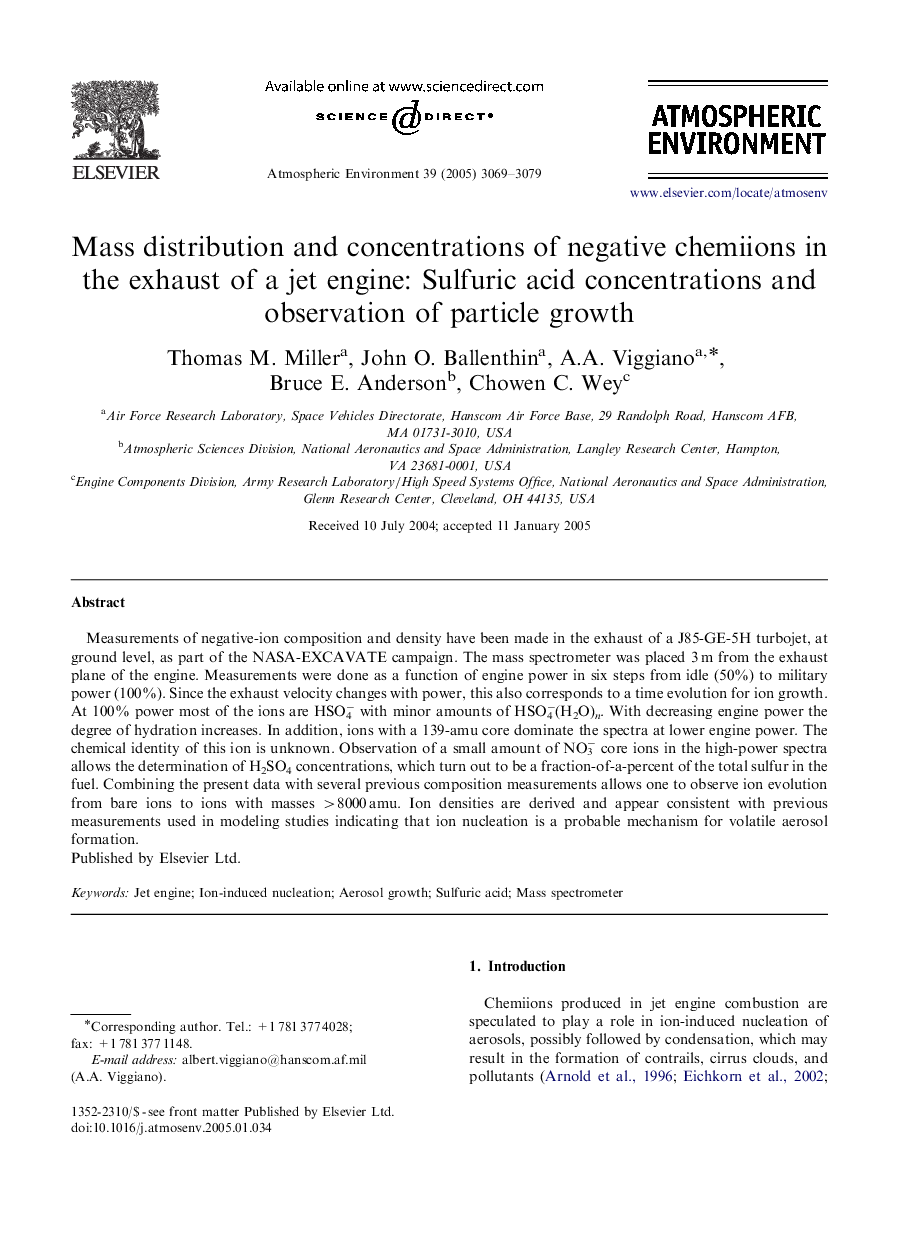| Article ID | Journal | Published Year | Pages | File Type |
|---|---|---|---|---|
| 4445569 | Atmospheric Environment | 2005 | 11 Pages |
Measurements of negative-ion composition and density have been made in the exhaust of a J85-GE-5H turbojet, at ground level, as part of the NASA-EXCAVATE campaign. The mass spectrometer was placed 3 m from the exhaust plane of the engine. Measurements were done as a function of engine power in six steps from idle (50%) to military power (100%). Since the exhaust velocity changes with power, this also corresponds to a time evolution for ion growth. At 100% power most of the ions are HSO4− with minor amounts of HSO4−(H2O)n. With decreasing engine power the degree of hydration increases. In addition, ions with a 139-amu core dominate the spectra at lower engine power. The chemical identity of this ion is unknown. Observation of a small amount of NO3− core ions in the high-power spectra allows the determination of H2SO4 concentrations, which turn out to be a fraction-of-a-percent of the total sulfur in the fuel. Combining the present data with several previous composition measurements allows one to observe ion evolution from bare ions to ions with masses >8000 amu. Ion densities are derived and appear consistent with previous measurements used in modeling studies indicating that ion nucleation is a probable mechanism for volatile aerosol formation.
